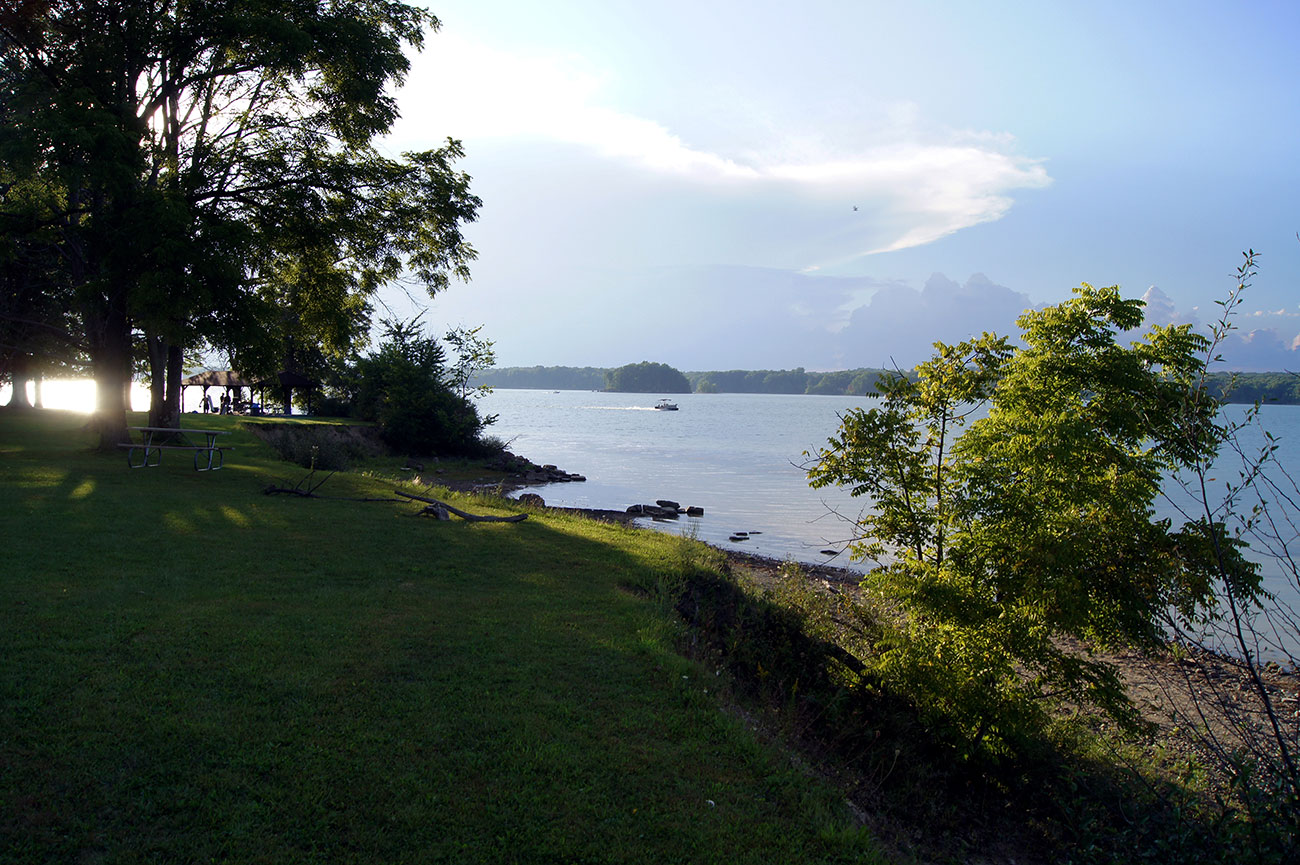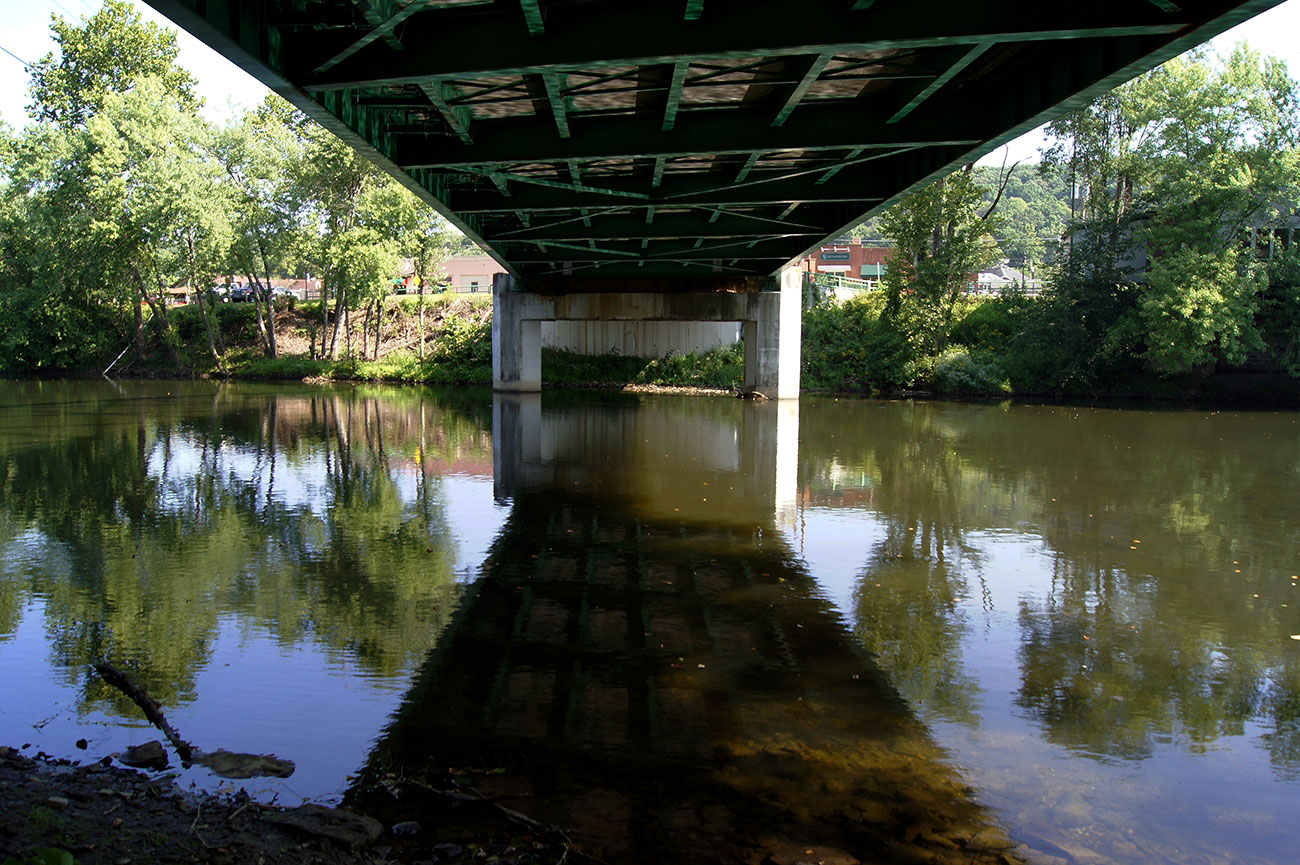Mahoning Valley, Ohio
Rivers Continue on, and the Mahoning is No Exception
The Mahoning River has long defined the region. It helped power industrial growth, and its subsequent despoliation made vivid industry’s costs. As the region looks beyond its past of economic decline following the withdrawal of steel production, the Mahoning has returned as part of a more optimistic future.
In the essay and photographs below, landscape architect Charles Frederick poetically meditates on the forces that have shaped the Mahoning River and, in turn, the region. —Quilian Riano, In the Mahoning Valley chief editor
Learn more about the Mahoning River and recent efforts to remove its dams.
The waters, landscapes, and ecosystems found within the watershed of the Mahoning River have an intangible beauty that is easily perceived but must be fully experienced by immersing oneself in their many forms, processes, and moments. As with most river systems in Northeast Ohio, throughout the Mahoning River watershed you can see the stories of its people and their relationships with the river. You can still see the marks of people on everyday landscapes, and, if you look close enough, the watershed’s mark on them.
The river’s headwaters originate in the upper part of the watershed in rolling, glaciated landscapes. The river rushes and burbles its way through beech-maple forests, cutting through that calm, quiet stillness. Later, the forests give way to manmade lakes and reservoirs. These reservoirs were created to manage flooding and, as a byproduct, created areas for large-scale recreation. Now the river has calmed into a lake, with the outcry of outboard engines filling the silence.
The dams create impressive mist-filled releases of this calmed water as minor engineered waterfalls.
From the headwaters, the river continues its path to the east. Newton Falls typifies most cities’ relationships with the river, with minor acknowledgement to it.
Credits: Charles Frederick
The river continues to be controlled with dams—the legacy of decades of industrial use. As with many other areas, industry has faded, yet the river continues its journey.
The part of the Mahoning Valley that is marked by a history of intensive industry begins just downstream from Perkins Park in Warren. The river continues from Warren through the postindustrial cities Niles, McDonald, Girard, Youngstown, Campbell, Struthers, and Lowellville. Almost every city has at least one dam that was once used as a source of industrial cooling water and a release point for effluent. In most of these cities, the river was hidden from residents, living on primarily in the folklore of strange smells and colorful foam. You were told to avoid it, and if you took the dare and went down to the muddy edge, the rumors would be confirmed. The memory of a river that had lost its way persisted.
The river did not lose its way; it continued its journey.
We lost our way.
Credits: Charles Frederick
When industry faded, we hoped for more to take its place. These lost places and industrial ruins tell important stories of their communities, and of a river that is both natural and engineered. Like the river, these communities can endure if they are willing to change.
The river continues its journey.
The river is now bucolic and flows into Pennsylvania and its confluence with the Shenango River. It eventually becomes part of the upper Ohio River watershed. And still it defines communities that were once the backbone of the nation’s coal, steel, and manufacturing industries.
The Mahoning Valley has seen many dark days since Black Monday in 1977. We have controlled the river in such a way that we have lost sight of how connected we are to it. This river will be a critical factor in the future of this valley and region.
We are a water species living on a water planet. This is easy to understand when you stand at the water’s edge. But we need to be engaged in these water places and processes no matter where in the watershed we are located. Everything is connected, and a balance can be formed between our economy, environment, and social relationships. The solution is to engage our water heritage and recognize how our stories are intertwined with those of the river.
Because the river will continue its journey, with or without us—as it has always done.
Biographies
has experience in both private practice and academia. He received his bachelor’s degree in architecture from Kent State University and his master’s in landscape architecture from the University of Virginia. Since 1999, Frederick has taught architectural design studios, landscape electives, and urban design seminars at Kent State University’s College of Architecture and Environmental Design. In 2014, he helped establish the school’s graduate landscape architecture program. His interests are in community engagement, sustainable design, and the Great Lakes region. He is an enthusiastic pedestrian and appreciates life at three miles per hour.
The views expressed here are those of the authors only and do not reflect the position of The Architectural League of New York.




